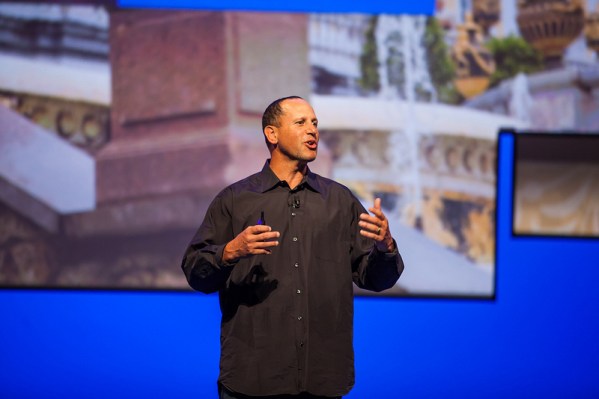The desktop’s future isn’t bright, but it isn’t likely to go away anytime soon, Microsoft’s Chief Evangelist Steven Guggenheimer told me last week during a brief interview in St. Petersburg, Russia on the sidelines of Microsoft’s Imagine Cup finals there. “Over time, it’s likely to go away,” Guggenheimer first said, but then he quickly qualified that statement, saying that he doesn’t know “if it’ll ever go away completely.”
With Microsoft 8.1, my personal feeling is that Microsoft continues to de-emphasize the desktop, but Guggenheimer actually argues the opposite. In his view, Microsoft de-emphasized the desktop a bit too much when it first started talking about Windows 8. “We tried to dial it up again a bit at Build,” he said. Today, 700,000 apps run in the Windows desktop mode and “some of the fidelity of mouse and keyboard will never go away.” Excel spreadsheets, AutoCAD and similar tools still need these old-school input methods, after all.
In Guggenheimer’s view, there is “this weird balance between [the desktop] ending up being less critical over time, but it probably never goes away completely. Or if it does, it’s hard to predict when.”
Microsoft, he believes, “tries to play that balance well.” The company wants new apps to take advantage of the new generation of PC hardware that now often includes touchscreens. “There is a natural transition to apps that talk more to each other and take more advantage of the hardware, which is a change from the desktop,” Guggenheimer believes.
Future Of Imagine Cup
 Over the course of the conversation, we also touched upon Microsoft’s outreach to students and the Imagine Cup, Microsoft’s global software development competition for students. Guggenheimer noted that there are some aspects to the program that “are phenomenal,” but “some aspects don’t scale as well as we’d like.”
Over the course of the conversation, we also touched upon Microsoft’s outreach to students and the Imagine Cup, Microsoft’s global software development competition for students. Guggenheimer noted that there are some aspects to the program that “are phenomenal,” but “some aspects don’t scale as well as we’d like.”
Over the course of the last few years, Microsoft has tried to increase the number of Imagine Cup entries that become full-blown startups, though the overall number of real success stories there remains relatively low. With 25,000 students participating, the question for Guggenheimer becomes how to scale Imagine Cup so that all of these students – and not just the finalists – get a better chance at turning their ideas into businesses.
Specifically, he noted that all the resources Microsoft pours into organizing the Imagine Cup finals in a different country every year represent a “trade-off” and “the money you spent on that is the money you don’t spend elsewhere.” After taking the finals to Australia and Russia in the last two years, next year’s edition will be held on Microsoft’s campus in Redmond. Given Guggenheimer’s comments, it’ll be interesting to see what Microsoft has planned for future editions of its flagship software development competition.
Image credit: Microsoft
